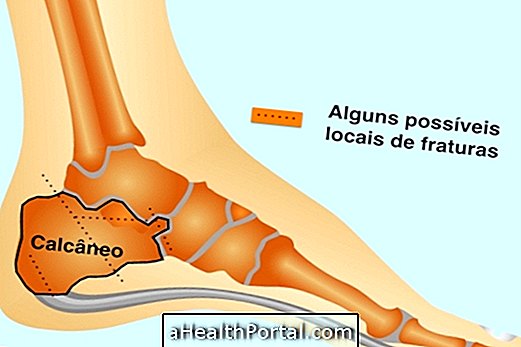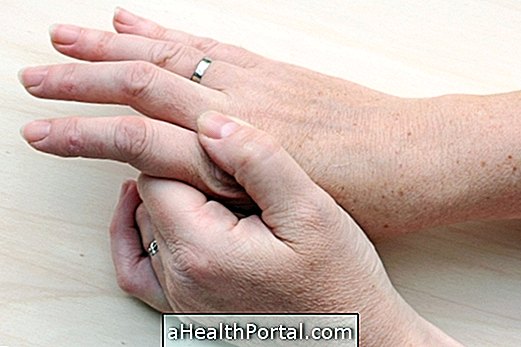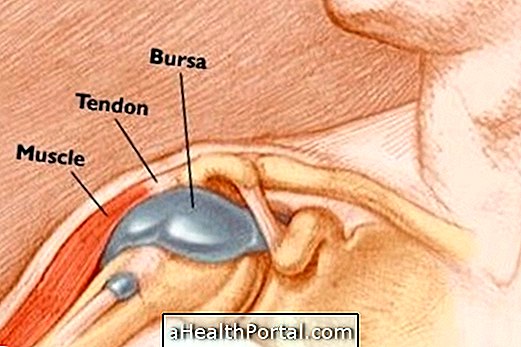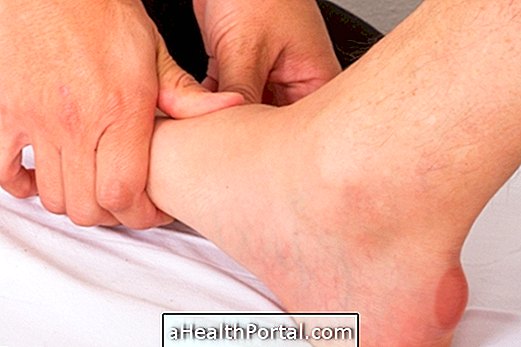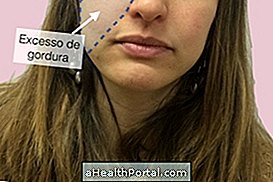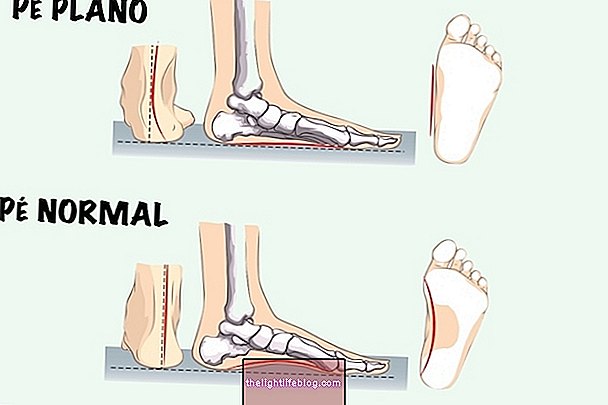The valgus foot, also known as flat valgus foot, is characterized by a reduced or absent internal arch of the foot. This condition is very common in children and, in most cases, it resolves spontaneously, with the development of bones and with the reduction of ligament elasticity, without the need for treatment.
However, in some cases, when the arch does not develop alone, and when difficulties arise when walking or imbalance, for example, it may be necessary to carry out treatment, which can be done with adapted shoes, physiotherapy and special exercises and, in cases more severe, surgery may be necessary.

Possible causes
The valgus foot is related to the tissues, tendons and bones of the feet and legs that, in babies and young children, are still developing and have not yet formed an arch. However, if the tendons are not fully tightened, it may result in valgus feet.
This condition is more common in people with a family history of valgus foot, obesity and rheumatoid arthritis. People who are more likely to suffer injuries due to this condition are those who are physically very active, because they are more at risk of injury, the elderly, because they are more prone to falls and people with cerebral palsy.
What are the signs and symptoms
The valgus foot is characterized by a reduced or completely flat internal arch of the foot, which can lead to a deviation of the heels, being noticed in the shoes, whose wear occurs on more than one side. In some cases, this condition can cause pain and difficulty walking, easy tiredness, imbalance or a greater propensity for injuries.
See other causes of heel pain.
How the diagnosis is made
If the person feels unbalanced, pain when walking when running, or wear shoes on only one side, he should go to an orthopedist to make a diagnosis. Generally, these signs are noticed immediately in the child and, often, the valgus foot ends up resolving itself.
The doctor will observe the foot, how to walk and, in children, may also perform a neurological examination, in order to exclude other diseases. In addition, you can also request some exercises to assess the behavior of the foot and imaging tests, such as X-rays.
What is the treatment
Treatment is generally not necessary, as the foot takes on a normal shape as the bones develop and the ligaments become less elastic.
However, in some cases, the orthopedist may recommend the use of special shoes, physiotherapy and / or the performance of simple exercises, such as walking on tiptoes and heels, picking up objects with your feet or walking on uneven floors, in a way to strengthen the muscles of the region.
Surgery is a very rare option and is generally only recommended in more severe cases, where the valgus foot has worsened or when other treatment options have not solved the problem.
Was this information helpful?
Yes No
Your opinion is important! Write here how we can improve our text:
Any questions? Click here to be answered.
Email in which you want to receive a reply:
Check the confirmation email we sent you.
Your name:
Reason for visit:
--- Choose your reason --- DiseaseLive betterHelp another personGain knowledge
Are you a health professional?
NoMedicalPharmaceuticalsNurseNutritionistBiomedicalPhysiotherapistBeauticianOther
Bibliography
- BRAZILIAN SOCIETY OF PEDIATRIC ORTHOPEDICS. Flatfoot When parents should be concerned. 2016. Available at:. Accessed on Dec 10, 2019
- PORTUGUESE MAGAZINE OF GENERAL CLINIC. Foot Deformities - Basic Concepts and Guidelines for Family Physicians. 2009. Available at:. Accessed on Dec 10, 2019
- VICENTE, Evelin et al. Flat foot in childhood: time limits between physiological and local and ascending dysfunctions. Revista de Pediatria SOPERJ. Vol.16, n.3. 15-20, 2016
- CARVALHO FILHO, Guaracy et al. Flat Foot: Treatment by treatment using the modified Koutsogiannis Technique. ACTA ORTOP BRAS. Vol.11, n.4. 195-205, 2003
- ATIK, Aziz et. al .. Flexible flatfoot. North Clin Istanbul. Vol.1. 1.ed; 57-64, 2014
